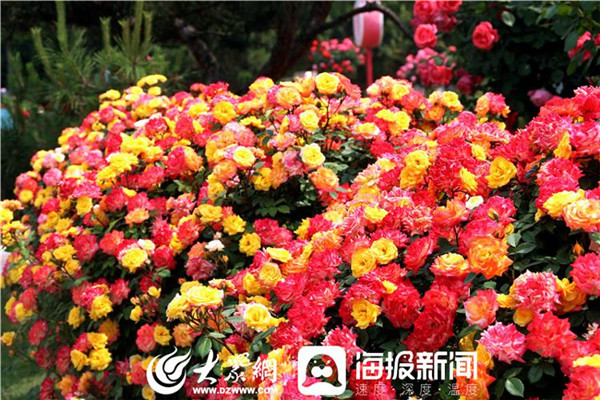Jining's Niu Chenglu devoted to preserving tiger fabric art
Qufu's Niu Chenglu is a practitioner of tiger fabric art, a municipal-level intangible cultural heritage item in Jining, and has a strong fascination with "tiger culture".
Niu would wear tiger-head shoes and a tiger-head hat made by his grandmother when he was a child, which explains his affinity with tiger-themed items.
When he was 10 years old, he noticed that there was less and less kids wearing tiger-head shoes. Worried that this traditional art might soon fade into obscurity, he made it his lifelong mission to ensure that it lives on forever.
After he graduated from high school in 1998, Niu started a career in the tiger fabric industry. In the beginning, he travelled across China learning about different patterns and their meanings, then he combined what he learned with the local culture in his hometown.
Niu can make 12 kinds of tiger fabrics completely by hand. His tigers are cute and stocky with outward-facing feet and a slightly raised head, representing vigor, vitality, happiness, safety, and childhood innocence.
In Qufu, handwoven cloth is used to sew tiger-shaped works, which is meant to expel evil spirits and invoke blessings for their family.

Tiger fabric work made at the Fulin workshop. [Photo/WeChat account: jnwhlyj]
In 2009, Niu Chenglu started a workshop named "Fulin" in his hometown, which means "blessings arrive" in Chinese. As a result, more jobs have been created, which will help this traditional handcraft to thrive and develop. Over 70 fellow villagers are now working in Niu's workshop.
Wang Zhongjin, 76 years old, is the oldest craftsman in Niu's workshop and has been working here for 9 years. She has no problem making the tiger fabric works, as she is skilled at needle work.
However, her eyesight is beginning to fail, so she is now responsible for filling the tigers with cotton. This is not as easy as it sounds, as she must know precisely how much cotton to place into each part of the tiger. It takes about 5 to 6 minutes to fill a duck-egg-sized tiger with cotton.
Niu insists on making the tiger fabric completely by hand. "Filling cotton with a machine is four times faster than doing it by hand, but the result is less vivid and lifelike," Niu said.

Tiger fabric works made by Niu's employee [Photo/dzwww.com]

 Nishan Forum on World Civilizations
Nishan Forum on World Civilizations Explore magnificent Yellow River culture in Shandong
Explore magnificent Yellow River culture in Shandong

